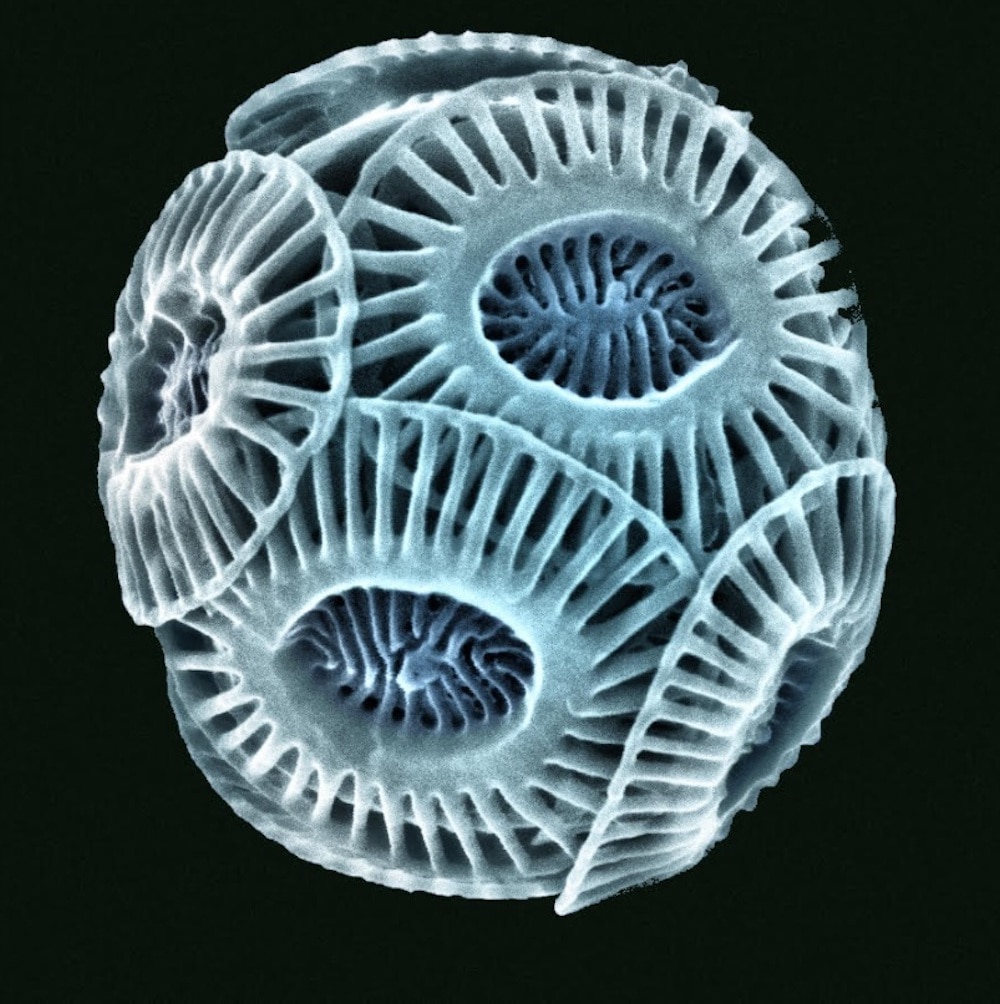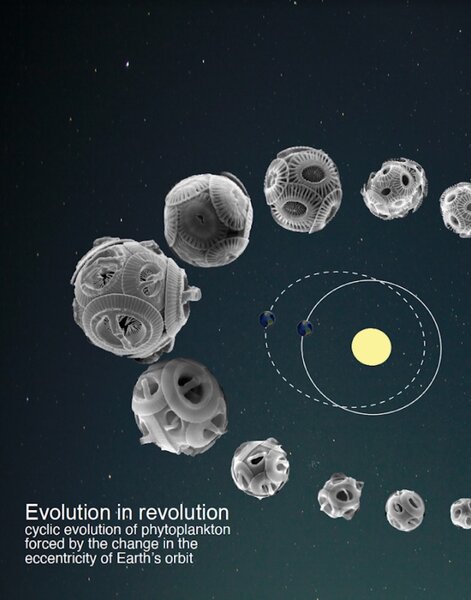Create a free profile to get unlimited access to exclusive videos, sweepstakes, and more!
Mood swings in Earth's orbit can influence evolution of phytoplankton
Jupiter is messing with our plankton!

The evolution of species is driven by natural pressures like predator and prey interactions, resource availability, and sexual preference of mates, but it turns out even the influence of other planets has an impact on who survives and thrives on Earth.
Our planet is involved in a complex cosmic dance around the Sun, which changes over long stretches of time as our dancing partners (the other planets) draw closer or grow farther away. A recent paper by Luc Beaufort from Aix-Marseille University in France, and colleagues, explores the way changes in Earth’s orbit impacts the evolution of tiny phytoplankton. Their results were published in the journal Nature.
Today, Earth’s orbit is close to circular, but gravitational pressure from Jupiter and Saturn causes it to become more elliptical on a regular cycle of about 100,000 years. During those periods of high eccentricity, seasonal changes become more severe. It’s this interplay which drives relative changes in the evolution of small oceanic algae known as coccolithophores.
“This is a new thing we observed. Right now, eccentricity is very low, almost circular. So, there are no seasons at the equator. All year long the Sun is at the center of the circle. When eccentricity is quite high the Earth is closer or further away at different points of the year and it creates seasons at the equator,” Beaufort told SYFY WIRE.
Equatorial coccolithophores enjoy a sort of vacation period when eccentricity is low, and their climate is relatively stable over long stretches of time. When eccentricity is high, however, those seasonal changes create varying ecological niches, and these organisms are forced to adapt or die. As a result, scientists looking back through deep time see higher rates of variation during times when Earth’s orbit is more eccentric. Species begin to change in size, with some growing larger and others getting smaller.
“Right now, there are 5 or 6 species known and we know from genetic analysis that they all come from one ancestor and diverged during the increase in eccentricity. Now that eccentricity is low, we see that one of the species, the one which is medium-sized is the successful one,” Beaufort said.
Coccolithophores make good target species for measuring changes in evolutionary pressure over time, both because there are so many of them but also because of their body structures. Throughout their lives, they build limestone plates around them, which are left over when they die and sink to the sea floor. As a result, the sediments of the sea floor are riddled with the skeletons of millions of years’ worth of dead algae.
“The advantage of coccolithophores is they are very small so we have a continuous and extensive amount of specimens and we can study them with high precision. When you look at dinosaurs you have one here and one there, you don’t have enough details. It’s possible this happens in other organisms, but this is the first time we’ve been able to show it,” Beaufort said.
Researchers dug hundreds of meters into oceanic sediment to gather coccolithophore remains dating back 2.8 million years and examined them using automated microscopes and neural networks. By placing a sample in the microscope, these tools are able to automatically recognize different species using technology similar to facial recognition. 3D imaging allows scientists to determine the mass of individual plankton as well as morphological changes. Over the course of only 20 minutes, they can gather all the data they need on more than a thousand individual specimens.
Modeling the changes in diversity over time and bumping it up against known orbital cycles confirmed the impact of orbital eccentricity on the evolution of coccolithophores, and they’re probably not alone. Something similar is likely happening in other forms of plankton as well, and driving downstream effects in the environment.
“We have no evidence of it yet, but what happened to coccolithophores — which represent roughly 10% of the algae — we think it’s happening in all other phytoplankton groups. If that’s the case, it could have an impact. Low eccentricity would mean more spreading and blooming, more productivity of phytoplankton so more food for higher organisms. Therefore, maybe more whales, but we’re not sure,” Beaufort said.
Beaufort and colleagues observed cycles at both 100,000 years and 405,000 years, and they believe there could be another cyclical rhythm happening at 2.5-million-year intervals. In future experiments they want to go deeper in time, gathering samples from the last 25 million years to test that hypothesis.
This research demonstrates for the first time the interrelated nature of our environment, not just with our own planet, but with other large bodies in the solar system. It also reminds us that it’s okay to be mediocre when times are comfy, but when the world gets weird, you better get weird too.



























